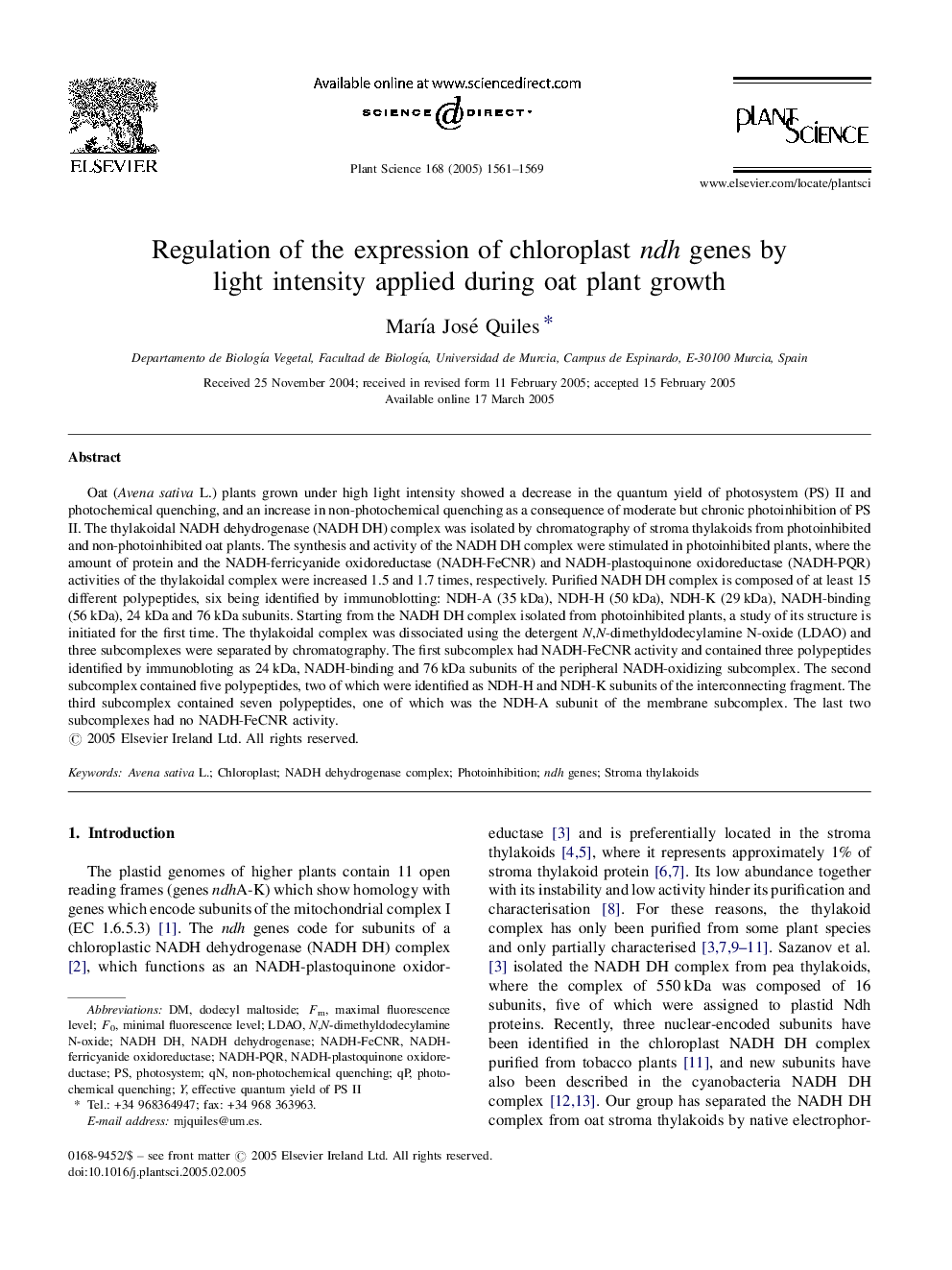| Article ID | Journal | Published Year | Pages | File Type |
|---|---|---|---|---|
| 10841082 | Plant Science | 2005 | 9 Pages |
Abstract
Oat (Avena sativa L.) plants grown under high light intensity showed a decrease in the quantum yield of photosystem (PS) II and photochemical quenching, and an increase in non-photochemical quenching as a consequence of moderate but chronic photoinhibition of PS II. The thylakoidal NADH dehydrogenase (NADH DH) complex was isolated by chromatography of stroma thylakoids from photoinhibited and non-photoinhibited oat plants. The synthesis and activity of the NADH DH complex were stimulated in photoinhibited plants, where the amount of protein and the NADH-ferricyanide oxidoreductase (NADH-FeCNR) and NADH-plastoquinone oxidoreductase (NADH-PQR) activities of the thylakoidal complex were increased 1.5 and 1.7 times, respectively. Purified NADH DH complex is composed of at least 15 different polypeptides, six being identified by immunoblotting: NDH-A (35Â kDa), NDH-H (50Â kDa), NDH-K (29Â kDa), NADH-binding (56Â kDa), 24Â kDa and 76Â kDa subunits. Starting from the NADH DH complex isolated from photoinhibited plants, a study of its structure is initiated for the first time. The thylakoidal complex was dissociated using the detergent N,N-dimethyldodecylamine N-oxide (LDAO) and three subcomplexes were separated by chromatography. The first subcomplex had NADH-FeCNR activity and contained three polypeptides identified by immunobloting as 24Â kDa, NADH-binding and 76Â kDa subunits of the peripheral NADH-oxidizing subcomplex. The second subcomplex contained five polypeptides, two of which were identified as NDH-H and NDH-K subunits of the interconnecting fragment. The third subcomplex contained seven polypeptides, one of which was the NDH-A subunit of the membrane subcomplex. The last two subcomplexes had no NADH-FeCNR activity.
Keywords
Related Topics
Life Sciences
Agricultural and Biological Sciences
Plant Science
Authors
MarÃa José Quiles,
